About the Georgetown Wet Weather Treatment Station
Learn about the design and sustainability features of the Georgetown Wet Weather Treatment Station and why King County embarked on the project.
Why King County built this station
The Georgetown Wet Weather Treatment Station is part of a larger Combined Sewer Overflow (CSO) Control Plan to reduce CSOs into local waters and protect public health and the environment. Duwamish projects, including this treatment station, were prioritized based on what King County heard from the community.
The Georgetown Wet Weather Treatment Station greatly reduces untreated wastewater and stormwater that would otherwise spill into the Duwamish River.
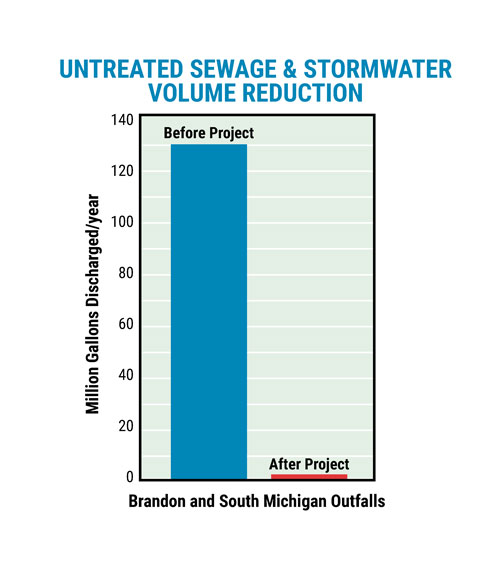
The Georgetown Wet Weather Treatment Station Project reduces untreated sewage and stormwater from entering the Lower Duwamish River at these outfalls by 95 percent.
How to tell the station is at work
You can tell when the Georgetown treatment station is at work in the following ways:
- Passersby can see what is going on inside through the fencing and the building itself.
- Special lights along the building light up when the station is working.
Outfall structure
As part of the Georgetown Wet Weather Treatment Station Project, King County Wastewater Treatment Division built a new outfall structure. It is located under the First Avenue South Bridge. King County’s contractor, Pacific Pile and Marine, constructed the outfall structure to connect the Georgetown Wet Weather Treatment Station to the Duwamish River. Construction of the facility, related pipes, and outfall structure helps reduce the amount of untreated rain and wastewater entering the Duwamish River by 95 percent.
Outfall structures are pipes that transport treated stormwater and wastewater into rivers, lakes, or Puget Sound. After the underground and in-water pipes were installed, the team restored the area around the Duwamish entry point with native plants and logs to stabilize the river and improve wildlife habitat. Artwork by Don Wilkison was also installed on the visible outfall structures.
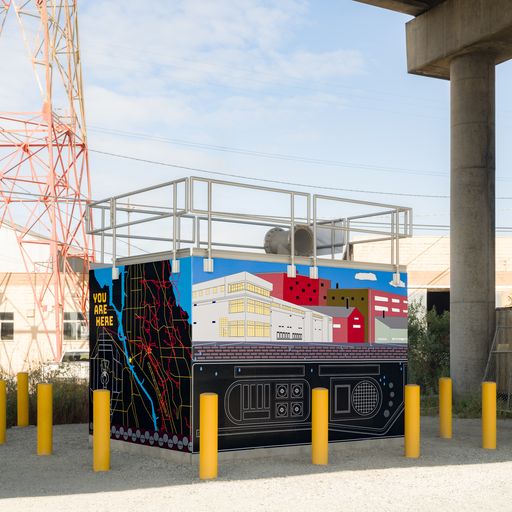
Connecting to the river
Three elements make up the Georgetown Wet Weather Treatment Station: the processing facility, pipes that connect the facility to the river, and an outfall structure that releases clean water into the Duwamish River. Cleaned water flows through underground pipes to pass through an outfall structure and enter the Duwamish River underneath the SR-509 Bridge.
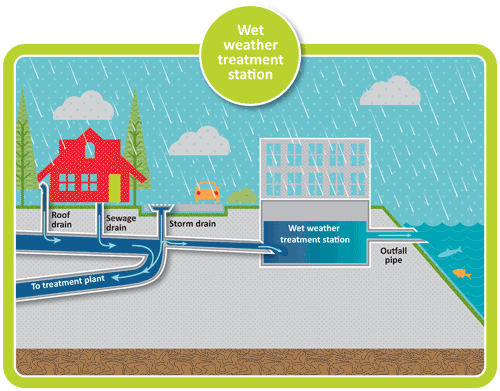
Platinum Achievement Award for sustainability
The station earned the coveted “Platinum” rating from the Institute for Sustainable Infrastructure’s Envision rating system. This is the first Platinum-awarded Envision project in Washington and recognizes King County’s commitment to sustainable communities and the environment.
The Institute for Sustainable Infrastructure’s Envision rating system assesses sustainability in five categories: quality of life, leadership, natural world, resource allocation, and climate and resilience. These contribute to positive social, economic and environmental impacts on a community during the planning, design and construction of infrastructure projects.
Key sustainable features that contributed to this project earning Envision Platinum include:
- Supporting jobs through a local hire requirement
- Using public art and green space to enhance a key corner in Georgetown
- Diverting more than 85 percent of demolition materials from the landfill
- Implementing a wide range of green infrastructure: permeable pavement, green roof, roadside rain gardens, and cisterns
- Restoring shoreline along the Duwamish River
- Reducing chemical use at the facility
- Planning and designing for a changing climate
- Partnering with the local community in a Design Advisory Group that influenced the site’s look and feel
The Georgetown Wet Weather Treatment Station was the first project chosen by the Environmental Protection Agency (EPA) to receive a new type of low-interest loan called a Water Infrastructure Finance and Innovation Act loan. The loan will save ratepayers about $34 million. According to the EPA, pursuing the Envision Platinum certification played a large role in the EPA’s funding decision.
Community inspired design
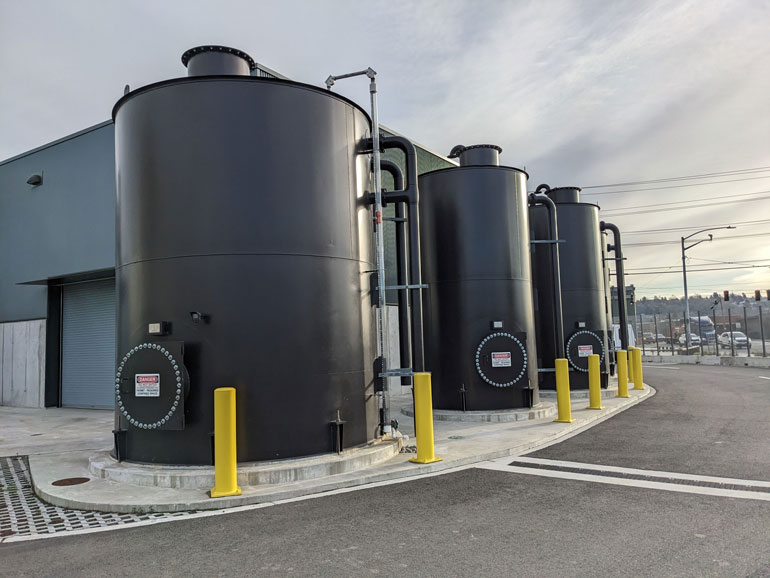
Cisterns can store more than 35,000 gallons of rain water from the station's roof each year. The stored water is used to water the station's plants and trees, which will improve air quality.
The King County Wastewater Treatment Division included community members in the project's decision making. Through the Design Advisory Group, Georgetown community members and businesses advised the project team on station design. Additionally, over 100 neighborhood community members shared their thoughts on the project. The station design includes the following elements based in part on input from the community to ensure the station promotes environmental and social sustainability:
- New trees
- Filter stormwater
- Improve air quality
- Add tree canopy—an important community health indicator
- A green roof
- Cleans and absorbs stormwater
- Limits the station's heat contributions to the atmosphere
- Creates educational opportunities for community members
- Cisterns and rain gardens
- Collect stormwater for irrigation
- Improve the station's appearance
- Highlight simple ways we all can take to control pollution
Building community through green stormwater infrastructure
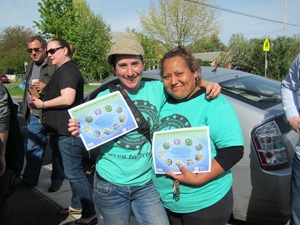 King County also invested in projects around the Georgetown neighborhood to improve water quality. The County supported the design and installation of a rain garden and two cisterns at Carleton Avenue Grocery.
King County also invested in projects around the Georgetown neighborhood to improve water quality. The County supported the design and installation of a rain garden and two cisterns at Carleton Avenue Grocery.
As part of the project, contractor Stone Soup Garden and Urban Systems Design mentored and trained a crew of 13 young adults with the Duwamish Infrastructure Restoration Training (DIRT) Corps, which provides hands-on training for green job seekers.
DIRT Corps crew learned all about installing cisterns and designing and constructing rain gardens. Their newly acquired experience enables them to pursue training as RainWise contractors.

 Translate
Translate